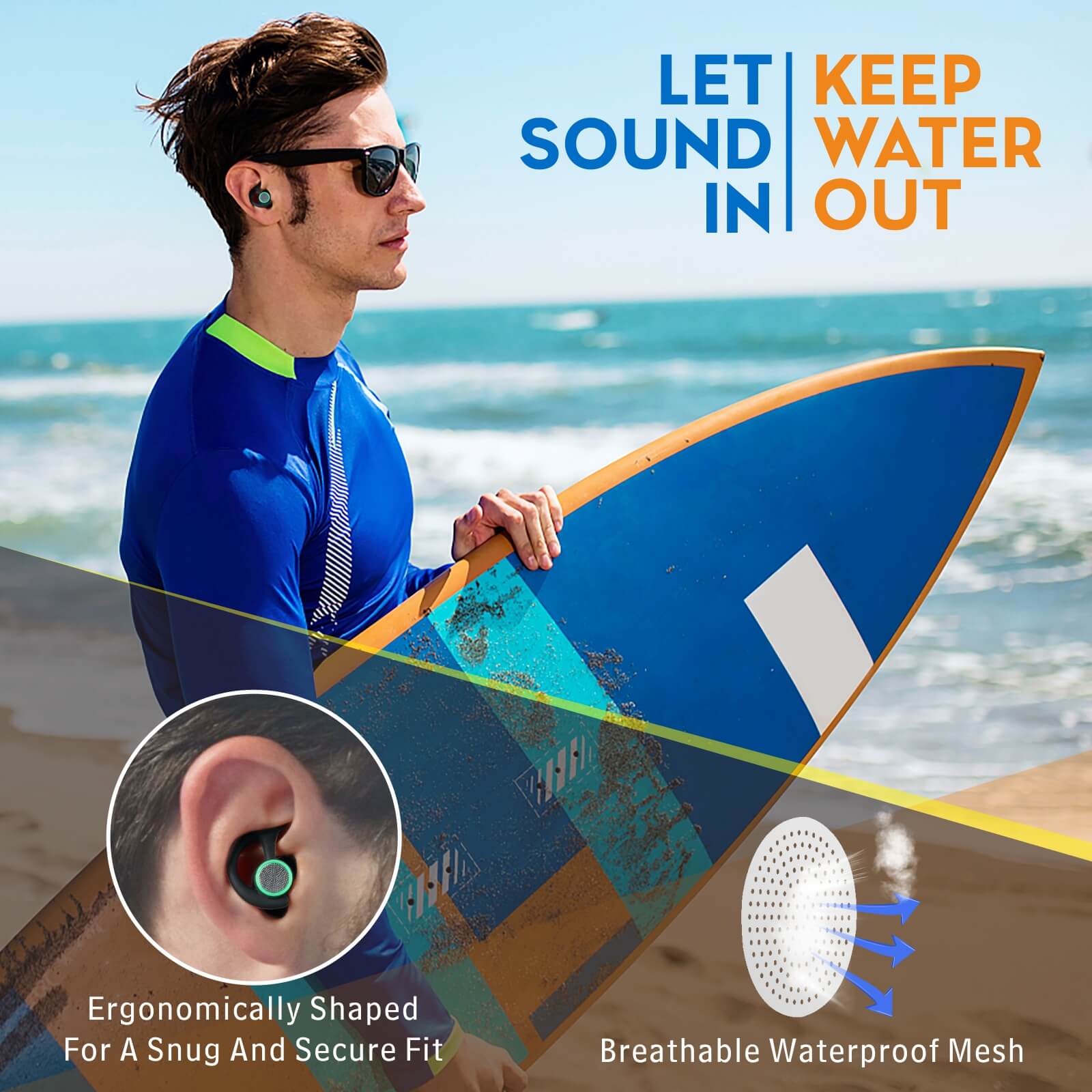Swimming is a popular activity that offers numerous health benefits. However, it is important to protect our ears from water and potential infections. This is where swimming ear plugs come into play. In this article, we will explore the different types and materials of swimming ear plugs, providing you with a comprehensive understanding of this essential swimming accessory.

The Importance of Swimming Ear Plugs
Before diving into the various types and materials of swimming ear plugs, let's understand why they are important. When we swim, water can enter our ears and cause discomfort or even lead to infections. This is particularly common in individuals who have a history of ear problems or frequent exposure to water. Swimming ear plugs act as a barrier, preventing water from entering the ear canal and reducing the risk of infections.
Types of Swimming Ear Plugs
There are several types of swimming ear plugs available in the market, each offering unique features and benefits. Let's explore some of the most common types:
1. Molded Ear Plugs
Molded ear plugs are custom-made to fit the unique shape of your ears. These ear plugs are typically made by taking an impression of your ear canal and then creating a plug that perfectly matches the contours of your ear. Molded ear plugs provide a secure and comfortable fit, ensuring maximum protection against water and reducing the risk of leakage.
2. Pre-Molded Ear Plugs
Pre-molded ear plugs are ready-to-use and come in a variety of sizes to fit different ear shapes. These ear plugs are made from soft and flexible materials such as silicone or rubber. They are designed to be easily inserted into the ear canal and provide a snug fit. Pre-molded ear plugs are a convenient option for those who do not want to go through the process of getting custom-made plugs.
3. Flanged Ear Plugs
Flanged ear plugs, also known as multi-flanged ear plugs, are designed with multiple layers or flanges. These flanges create a seal that prevents water from entering the ear canal. Flanged ear plugs are often made from silicone or rubber and are available in different sizes. They offer a comfortable fit and are suitable for individuals with varying ear sizes.
4. Silicone Putty Ear Plugs
Silicone putty ear plugs are a popular choice among swimmers. These ear plugs are made from a soft and moldable silicone putty that can be shaped to fit the contours of your ear. Silicone putty ear plugs provide a customizable and comfortable fit, making them suitable for individuals with sensitive ears or those who find other types of ear plugs uncomfortable.
Materials Used in Swimming Ear Plugs
Swimming ear plugs are made from various materials, each offering different properties and benefits. Let's explore some of the common materials used:
1. Silicone
Silicone is a popular material for swimming ear plugs due to its softness, flexibility, and water-resistant properties. Silicone ear plugs provide a comfortable fit and are durable, making them suitable for regular use. They are also easy to clean and maintain.
2. Rubber
Rubber ear plugs are another common choice for swimmers. They are soft, flexible, and provide a good seal against water. Rubber ear plugs are often pre-molded and come in different sizes to fit various ear shapes. They are affordable and offer a reliable solution for ear protection during swimming.
3. Wax
Wax ear plugs are made from a soft and pliable wax material that can be molded to fit the shape of your ear. These ear plugs provide a comfortable and secure fit, effectively blocking water from entering the ear canal. Wax ear plugs are disposable and need to be replaced after each use.
4. Foam
Foam ear plugs are made from a soft and compressible foam material. They are designed to be rolled and inserted into the ear canal, where they expand to create a seal. Foam ear plugs offer a comfortable fit and are suitable for individuals with sensitive ears. However, they may need to be replaced more frequently compared to other materials.
Conclusion
Swimming ear plugs are essential for protecting our ears from water and potential infections. By exploring the different types and materials of swimming ear plugs, we can choose the most suitable option for our needs. Whether it's custom-molded plugs, pre-molded plugs, flanged plugs, or silicone putty plugs, there is a wide range of choices available to ensure a comfortable and secure fit. Remember to prioritize your ear health and enjoy swimming without any worries!








